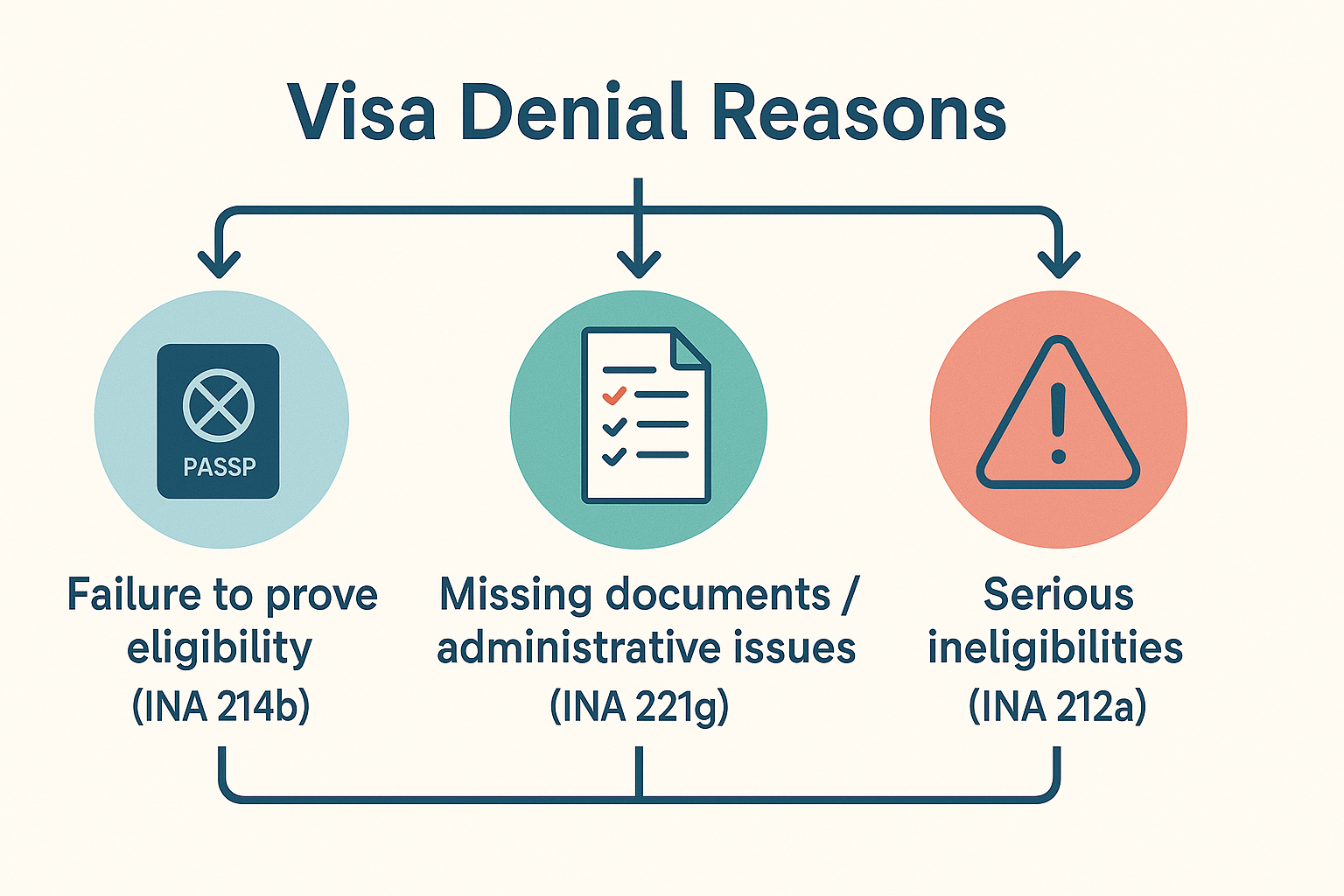Visa USA & School Admissions: Timing Your Travel for Your Child’s Education in America

Sending your child to study in the United States is a proud milestone, but for international families—especially high-net-worth expats in Dubai, Russia, or other GCC regions—it comes with specific challenges around synchronizing F-1 visa approval with rigid U.S. school start dates. Navigating this process requires careful planning, understanding of both U.S. visa policies and school enrollment timelines, and consideration of practical issues such as health insurance and parental travel. This condensed guide provides a comprehensive roadmap to ensure your family’s American education journey is smooth, timely, and stress-free.
Synchronizing F-1 Visa Approval with U.S. School Start Dates
The Critical Timeline
U.S. schools—whether K-12 or university—have fixed start dates, typically in late August/early September (fall) or January (spring). To secure your child’s place, you must receive F-1 visa approval well before the first class.
Early Admission and Form I-20
Start by applying to U.S. schools early—ideally the winter or spring before the intended fall start. Once accepted, the school issues Form I-20 (Certificate of Eligibility), required for the F-1 visa application.
Apply for the F-1 Visa Promptly
With the I-20 in hand, immediately complete the DS-160 visa application and book a consular interview. Thanks to a 2023 policy change, student visas can now be issued up to 365 days before the program starts (previously only 120 days). Use this expanded window to avoid last-minute issues.
Note: Even if the visa is issued early, your child cannot enter the U.S. more than 30 days before the program start date listed on the I-20. Plan the arrival accordingly.
Account for Processing Times
U.S. embassies experience a surge in student visa applications between June and August. Schedule interviews at least 8-12 weeks before school starts. For a late August start, aim for a May or June interview.
Align with School Arrival Requirements
Many institutions require early arrivals for orientation or placement tests. Ensure travel plans allow your child to arrive in the U.S. at least a week before classes.
Real-World Example: The Kapoor family in Dubai secured their son’s I-20 by April, booked a visa interview for May, and received approval in June for a September start. Their early planning avoided peak season delays and allowed a calm arrival.
Tip: Don’t finalize flights until the F-1 visa is approved. Visa issuance can be unpredictable—book refundable tickets for flexibility. Professional visa consultants can handle scheduling, paperwork, and personalized timelines to protect your child’s educational trajectory.
Best Time to Apply for an American Student Visa from Russia or Dubai
Your location and situation determine the optimal visa application timing. Here’s how to strategize:
Leveraging Local Advantages
- Apply During Off-Peak Periods: In Dubai, apply in spring (March–May) if possible, as summers are crowded.
- Check Local Wait Times: Dubai generally has shorter wait times than India or Russia, where backlogs can be several months.
- Account for Holidays: Avoid local (Eid) or U.S. (Thanksgiving, etc.) holidays, which can extend processing times.
Special Considerations for Russians
Due to diplomatic restrictions, U.S. visa services in Russia are limited. Russian families often apply in Dubai or Turkey. Start early, as you may need to travel to another country for the interview. Dubai-based consultants can assist with fast-tracking or scheduling appointments.
Maintain a Buffer
Apply at least 3-4 months before school begins to accommodate possible delays. Early application provides time to address administrative processing or unexpected hurdles. A late application may leave no room for error and could result in missing the start of classes or losing an academic year.
Tip: Some nationalities, such as Indians, receive 5-year F-1 visas, providing flexibility for return trips and eliminating the need for annual reapplications. Verify the visa’s validity period when issued.
U.S. School Enrollment Deadlines for International Families
Visa timing is only one side of the coin; understanding and meeting U.S. school application and enrollment deadlines is equally critical.
Key Deadlines
- University Applications: Most deadlines for fall (August/September) admission fall between November and January. Competitive programs may have earlier deadlines, while spring (January) starts have summer or early fall deadlines.
- Admission Offers and Acceptance: Universities typically require a deposit by May 1st for fall enrollments to secure the seat and release the I-20. K-12 schools often have a shorter window after the offer.
- School Start Dates and Orientation: Many universities require early arrival for orientation or placement testing, sometimes up to two weeks before classes. K-12 schools may have similar requirements for boarding or move-in.
Rolling Admissions and Late Entry
Some schools offer rolling admissions, benefiting late applicants. However, late admission compresses the visa and travel timeline, requiring expedited handling. If you receive a late offer, immediately request the I-20, pay the SEVIS fee, and book the earliest possible interview. Professional consultants can help negotiate late registration or deferrals in emergencies.
Special Requirements for K-12
Lower and upper primary schools typically start in late August/early September. Some may accept January intakes or have unique calendars. State or local enrollment requirements, such as vaccinations or additional documentation, may apply.
Communicate with Schools
If a visa delay is likely, inform the school immediately. U.S. institutions often accommodate proactive students and families with solutions, such as late arrival permissions or deferrals.
Requirements for Parents Accompanying Children on a U.S. Education Visa
The U.S. does not offer a specific “parent visa” to accompany F-1 student children. However, there are options and limitations for parental presence.
Using the B-2 Visitor Visa
- Primary Option: The B-2 tourist visa is suitable for parents wishing to accompany or visit their child studying in the U.S. You apply as a tourist but should be ready to state your purpose (e.g., helping your minor child settle in).
- Key Requirement – Non-Immigrant Intent: Demonstrate to the consular officer that you do not intend to immigrate or live in the U.S. permanently. Show strong ties to your home country—property, employment, family, etc.—and financial independence.
- Duration Limits: A B-2 visa typically allows a stay of up to six months per entry. In rare cases, especially for parents caring for minor children, an initial stay of up to one year may be granted, but do not rely on this. The B-2 does not permit residency.
- Financial Proof: Provide documentation proving you can support yourself during your stay without working in the U.S.
Practical Strategies
Many Dubai/UAE families already hold long-term, multiple-entry B-2 visas. If you don’t, apply well before your child needs to move. It is possible to apply for a B-2 before your child’s F-1 visa is issued. The common approach is to accompany your child initially, stay for a few weeks or months, then return home. You may visit again during school breaks or emergencies.
Important: Only spouses and minor children can receive F-2 dependent visas. Parents cannot get F-2 or equivalent dependent status through their child. In cases where your child is very young or for extended parental presence, consider alternative (though complex) options such as business or work visas. Consult an immigration expert for guidance.
Tip: Each family member—including siblings or spouses—needs their own B-2 visa if they wish to visit or accompany the student.
Health Insurance Options for International Students in the USA
Healthcare in the U.S. is expensive and often mandatory for students. Proper insurance is essential for both protection and compliance.
Types of Coverage
- University-Sponsored Plans: Most U.S. universities require international students to enroll in their provided health insurance plan, which covers basic medical care, emergencies, and mental health. Costs can exceed $2,000/year but are convenient and compliant.
- Private International Student Insurance: Some schools permit waivers if you show proof of equivalent private insurance. These specialized plans can be more flexible or affordable but must meet strict school criteria (coverage minimums, deductible caps, evacuation, pre-existing conditions, etc.). Submit waiver documentation on time.
- K-12 Students: Private schools often require or offer group insurance plans. If not, purchase a reputable private policy that covers pediatric care near the school.
Travel Insurance
While not required for the F-1 visa, travel insurance is wise for covering emergencies during the journey or the period before academic health insurance begins.
Why Insurance Is Essential
Medical expenses in the U.S. are steep—a simple medical visit can cost hundreds, and emergencies can cost thousands. Most schools require proof of health insurance before course registration. Insurance ensures your child won’t delay seeking care due to financial concerns.
Insurance for Accompanying Parents
Parents traveling on B-2 visas should also secure visitor health insurance to avoid significant costs from potential medical emergencies.
Pro Tips for a Smooth Visa & School Experience
Documentation and Preparation
- Check All Details: Ensure your child’s name is identical across all documents and matches the SEVIS ID. Correct any inconsistencies early.
- Pay the SEVIS I-901 Fee: Pay as soon as the I-20 is issued. The receipt is required for the visa interview and is valid for a year.
Visa Interview Success
- Practice Interview Questions: Help your child prepare to answer questions about their university choice, study plans, funding, and post-graduation goals in English.
- Strong Financial Evidence: Bring comprehensive financial documentation showing the ability to cover tuition and living expenses.
Travel Timing
- Observe the 30-Day Rule: The F-1 visa only allows entry up to 30 days before the program start date on the I-20. Plan travel within this window.
- Flexible Travel Plans: Book refundable or flexible air tickets in case of late approvals or changes.
Stay Informed and Use Trusted Sources
U.S. immigration policy can change rapidly. Follow official sources (e.g., the U.S. State Department) and consult experienced advisors. University international offices provide crucial pre-arrival checklists—review them thoroughly.
Conclusion: Plan Ahead for a Successful Education Journey
A successful U.S. education journey for your child, especially as a global family, hinges on strategic planning and attention to detail. From aligning visa approval with school start dates, applying early (leveraging your local advantages), understanding parental travel options, to securing comprehensive health insurance—every step matters.
Action Points:
- Start school applications early and aim for timely I-20 issuance.
- Apply for the F-1 visa as soon as eligible, using the expanded 365-day window.
- Prepare all documents meticulously, pay fees early, and rehearse for the interview.
- Communicate proactively with schools and keep informed about policy changes.
- Secure health insurance for both students and accompanying parents.
Professional visa consultants can streamline this process, offering tailored timelines, document preparation, and personalized support, so you can focus on your child’s success—not paperwork worries.
Ready to Begin? Mark your calendar, assemble documents, and seek expert consultation if needed. For step-by-step support with urgent U.S. student visas, visit https://visatest.thevisa.com/services/usa-urgent-visa/. With advance planning, your family can look forward to a seamless U.S. school start and a rewarding educational journey. Safe travels and best wishes for your family’s American adventure! Contact Us



